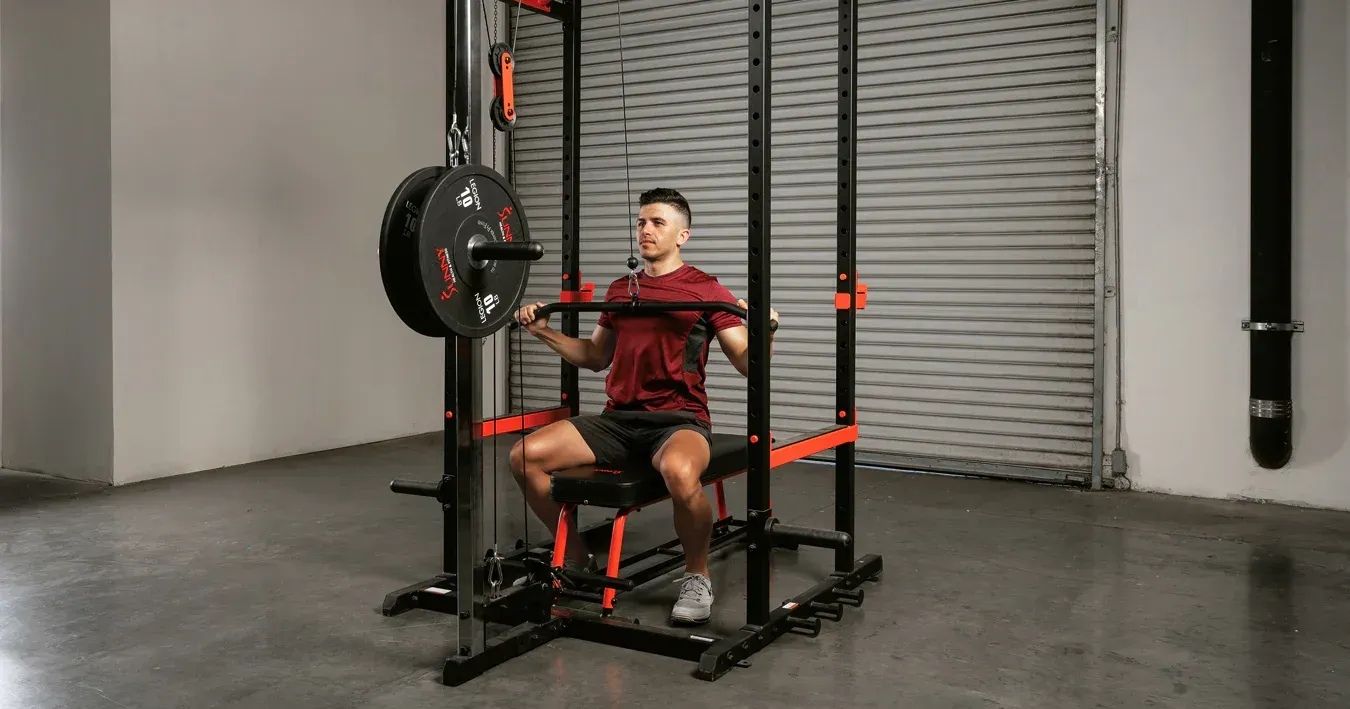Can You Build Muscle with Just an Arm Workout Machine?
Free weights are a cornerstone of any fitness routine. Whether you're building a home gym or managing a commercial fitness facility, proper storage is crucial. Not only does it keep your workout area safe and organized, but it also extends the lifespan of your equipment. In this blog, we’ll explore the best ways to store your free weights safely while maintaining an efficient and aesthetically pleasing workout environment.
Why Safe Free Weight Storage Matters
Before diving into the tips, let’s highlight why storage matters:
- Safety First: Improperly stored weights can cause accidents like trips or injuries, especially in high-traffic areas.
- Longevity of Equipment: Storing weights correctly protects them from damage, such as rust, dents, and scratches.
- Aesthetic Appeal: A well-organized gym is not just more functional but also more inviting for workouts.
- Space Optimization: Smart storage solutions allow you to maximize space, crucial for compact home gyms or busy fitness centers.
1. Choose the Right Storage Equipment
The foundation of safe free weight storage is investing in the right equipment. Here are some popular options:
A. Weight Racks
A sturdy weight rack is essential for organizing and safely storing your dumbbells, kettlebells, and plates. Choose racks that suit your needs:
- Horizontal Dumbbell Racks: Ideal for home gyms or smaller setups, these racks are compact and accessible.
- Vertical Racks: These save floor space and are perfect for kettlebells and smaller weights.
- Plate Trees: Great for storing weight plates compactly while keeping them easy to access.
B. Wall-Mounted Solutions
For smaller spaces, wall-mounted racks can be a game-changer. These are excellent for barbells and plates and free up precious floor space.
2. Organize by Weight and Type
Sorting weights by size, weight, and type is a simple yet effective way to maintain safety and efficiency. Labeling racks or sections helps users quickly locate the weights they need, minimizing clutter and confusion. For commercial gyms, this also improves user experience and reduces the risk of misplaced equipment.
3. Protect Your Flooring
Free weights are heavy and can damage your flooring if not handled or stored properly. Invest in:
- Rubber Mats: Durable mats absorb shock and protect both the floor and the weights.
- Floor Protectors: Use these under racks or areas prone to dropping weights.
Not only do these protect your floors, but they also reduce noise—a big bonus for home gyms in shared spaces or apartment buildings.
4. Ensure Stability of Storage Units
The last thing you want is for a rack or stand to wobble or tip over. Make sure your storage units are:
- Stable and Secure: Opt for racks with a broad base or wall-mount options for extra stability.
- Appropriate for the Load: Check the weight capacity of your storage equipment to prevent overloading.
If possible, anchor larger racks to the wall or floor for additional security.
5. Keep Your Free Weight Area Clutter-Free
A cluttered gym area can lead to safety hazards. Implement a "return policy" where all weights must be returned to their designated spot after use. This simple habit ensures that your workout space remains safe, organized, and ready for the next user.
6. Regular Maintenance and Cleaning
Routine maintenance is essential to keep your storage area safe and functional:
- Inspect Racks for Damage: Check for signs of wear and tear, such as loose screws or rust.
- Clean Your Equipment: Use a mild cleaner to wipe down weights and racks regularly, preventing dirt buildup and corrosion.
- Lubricate Moving Parts: If your storage units have moving parts, ensure they are lubricated to prevent squeaks or jams.
7. Use Space-Efficient Designs
If you're working with limited space, consider compact or multifunctional storage options. For instance:
- Combo Racks: These combine dumbbell and plate storage in one unit.
- Foldable Racks: Ideal for home gyms, these can be tucked away when not in use.
8. Encourage Safe Habits
Even with the best storage systems, safety ultimately comes down to habits. Whether it’s a personal gym or a commercial facility, encourage users to:
- Rack Weights After Use: Always put weights back in their designated spot.
- Lift with Proper Form: When moving heavy weights to or from storage, practice good lifting techniques to avoid injuries.
9. Custom Storage Solutions
For fitness centers or those with specific needs, custom storage solutions can be a worthwhile investment. Brands like Mavinpro offer customizable equipment tailored to your gym’s layout and branding. Custom racks not only fit your space perfectly but also add a professional touch to your facility.
10. Plan Your Layout Strategically
Lastly, consider the layout of your gym when arranging storage:
- High-Traffic Areas: Avoid placing storage units in pathways or crowded zones.
- Logical Placement: Place racks close to the workout area where the weights are most likely to be used.
- Accessibility: Ensure that weights are easily accessible without the need for bending, stretching, or lifting awkwardly.
Final Thoughts
Safe free weight storage is more than just a matter of organization—it’s an investment in safety, longevity, and the overall quality of your fitness environment. By choosing the right equipment, maintaining good habits, and planning your space wisely, you can create a gym setup that is not only functional but also inviting.
Whether you’re setting up a home gym or managing a commercial facility, brands like Mavinpro offer innovative solutions that combine performance, style, and safety. From compact racks to custom branding options, you’ll find everything you need to elevate your fitness space.
So, take the time to evaluate your current setup, implement these tips, and watch your gym transform into a safer, more efficient, and aesthetically pleasing space for all.





